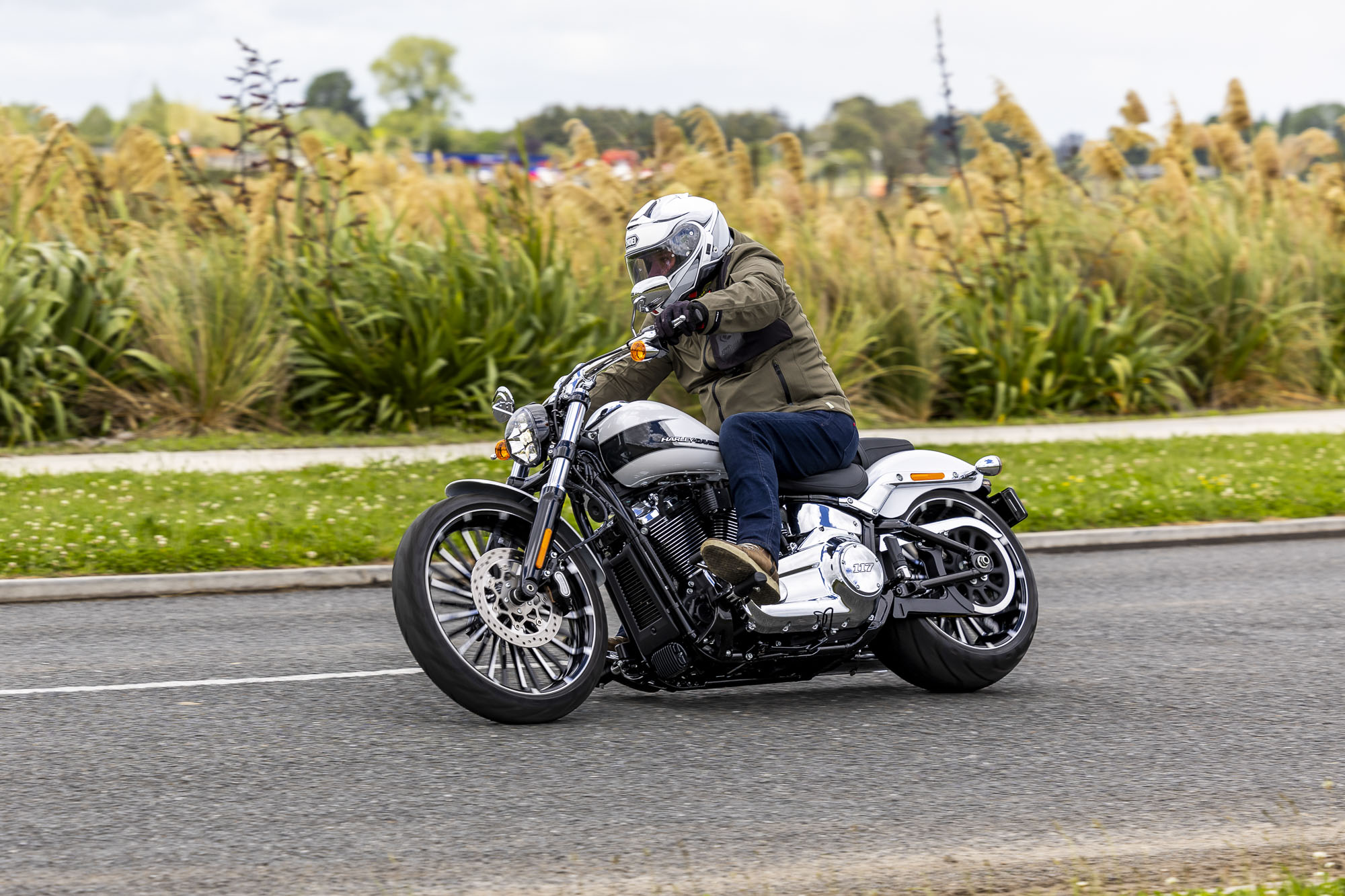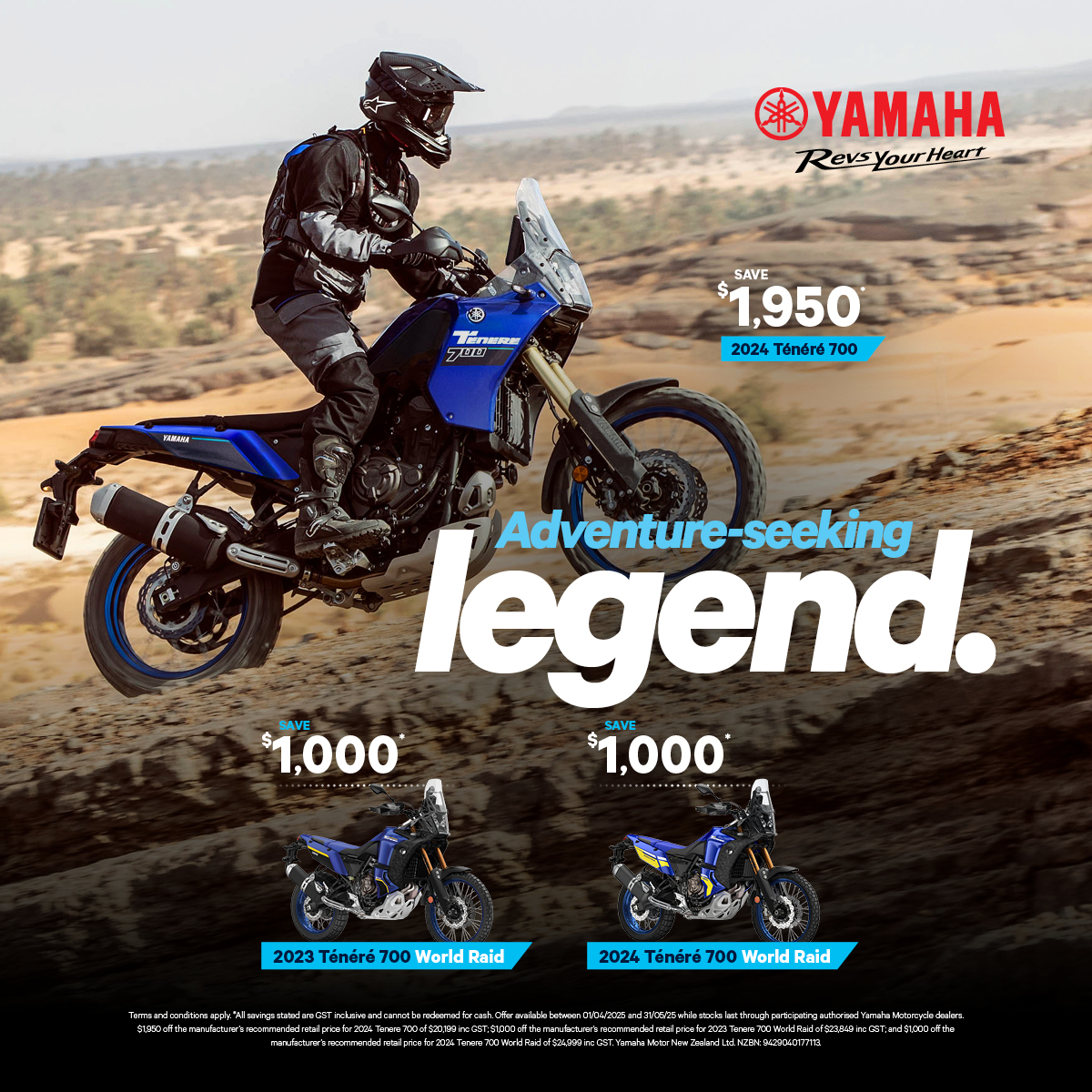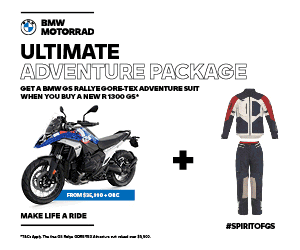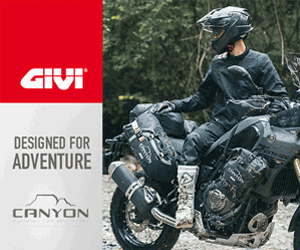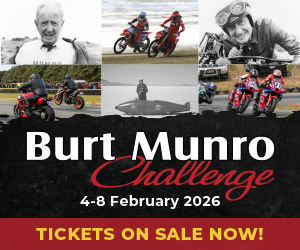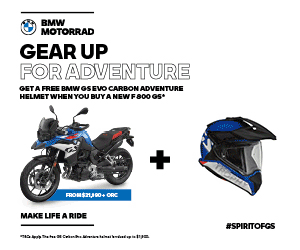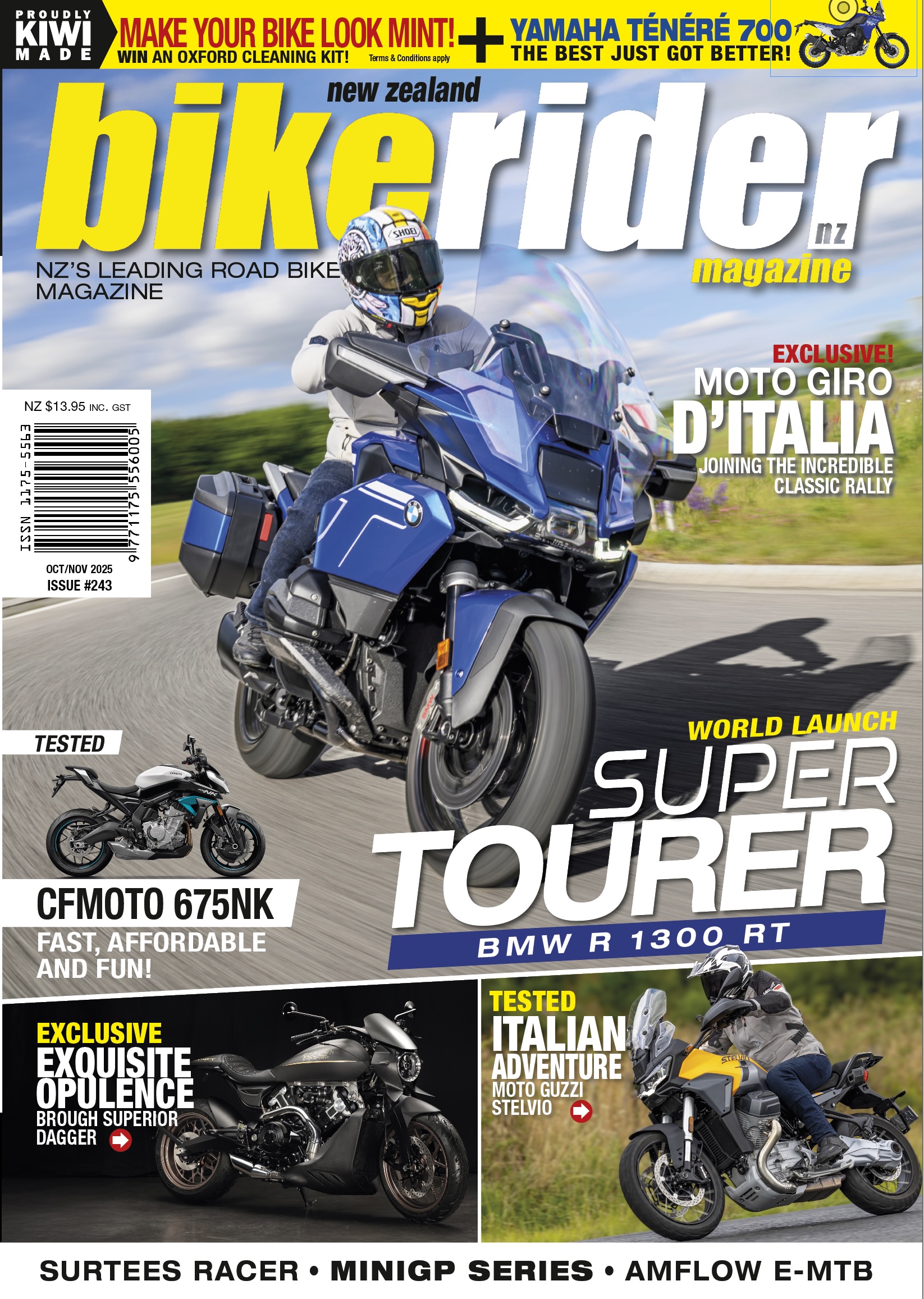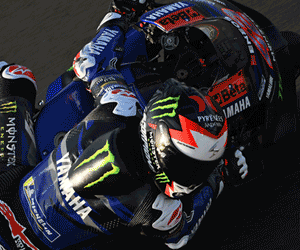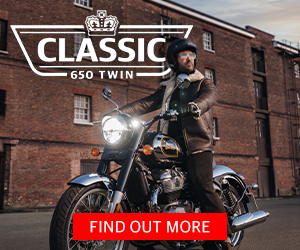Words: Paul Pics: Neil
With the launch of the new Softail range recently taking place, we thought we’d look at the 2024 H-D Breakout we rodle last year to see what keeps driving the popularity of what is surely the classic interpretation of an American laid-back motorcycle.
Despite a vast array of Harley-Davidson models to choose from, many of which have gained modern levels of electronic gadgets, improved handling and versatile personas, the Breakout still somehow manages to top the sales for the American brand here in NZ. Looking at the sales data for up till October 2024, there have been 44 Breakouts sold compared to their next biggest seller, the Low Rider S, at 34. Okay, the Breakouts have been a combination of the earlier 114 cu in version and this, the brutish 117-powered monster. But that’s still a lot of sales for a bike, which has been pretty much the same since the introduction of the Softail chassis in 2017.
So, what’s the attraction of the Breakout? Well, there really is nothing else like it nowadays, with the super-wide 240-section rear tyre combined with a stonking 1923cc V-twin making this the ultimate American cruiser. And it really has got the perfect silhouette of what you would imagine when someone says Harley-Davidson, with only the V-Rod or Fatboy conjured up in the imagination. For this motorcycle style, Harley really has the Breakout sorted, with the performance, look, and style of everything anyone could want in a motorcycle like this. Yet, somehow, H-D have also managed to make the Breakout reasonably useable and, dare I say it, practical, despite the raked out stance and that truck-sized rear rubber.
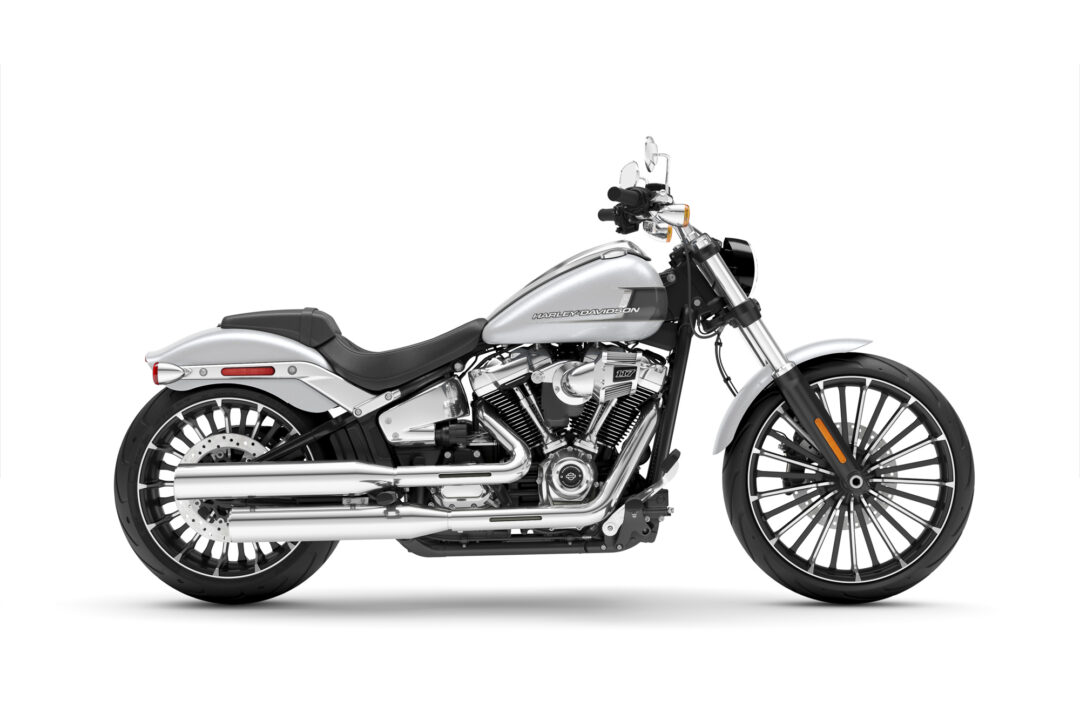
Not Black
Strolling around Road & Sport in Hamilton, the Harley-Davidson dealer where I collected the Breakout, it’s easy to work out what the favourite colour is for the majority of their customers. The clothing is black, the helmets are black and the bikes… yep, you guessed it, black. So it was refreshing to head out back and find the press bike waiting for me, which sat there gleaming in a stunning pearl white that sparkled against the chrome. It really was stunning, and stood out compared to the black bikes sitting around it.
Dropping into the Breakout’s seriously low saddle – this is a great bike if you’re shorter in the leg department – and it’s standard fare, with the chrome handlebars sweeping back towards me with the tiny LCD dash nestled in the top. The dash looks so small you’d have to think it was useless, but in fact, the engineers have done an excellent job by making the LCD screen almost invisible, therefore not ruining the style of the bike, yet it’s still practical. Your speed is obviously in the centre, while there’s also a gear indicator, which is really useful as this isn’t the sort of bike you want to drop a gear too low on inadvertently. You can then flick through other info, including trips, fuel distance and a rev counter, which is my favourite place to leave it. It’s cleverly simple and just works, much like the rest of the bike.
With the fob tucked in my pocket – there’s none of that searching around under your leg to find the ignition anymore – it’s a couple of flicks, and the big twin bursts into life, settling down into a rumble that’s probably going to be too muted for the majority of Breakout owners. Selecting first gear has the traditional Harley clunk, yet the gearbox smooths out once you’re on the move, and the heavy clutch lever only needs to be brought into action when starting and stopping. With those two massive pistons beating beneath you, it soon becomes apparent that this is a motorcycle which likes shifts to be planned and timed so the rest of the mechanical internals can match the speed, and as soon as you understand that then you discover the Breakout is quite happy to be hustled along at a decent pace.
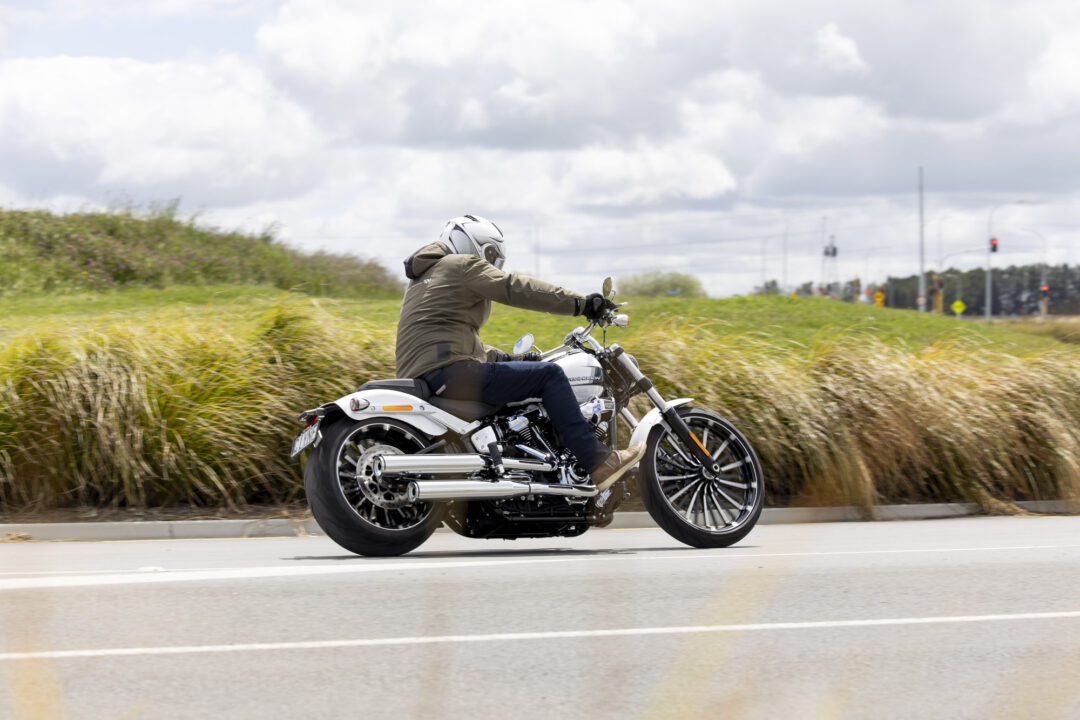
Dragging away from traffic lights is easy and, to be fair, expected when riding a Breakout, although it’s more into being short-shifted and delved back into the chunky torque around 3,000rpm than holding onto the revs for the max power at 5020rpm where you soon bump into the rev limiter. And corners need to be approached with a bit of planning, much like the gearshifts, with the limited lean angle soon seeing the pegs touching down should the corner inadvertently tighten up or you’re simply going too quick. It’s not as bad as you’d expect simply from looking at the Breakout, and somehow the H-D engineers have managed to make this classic cruiser handle much better than any traditional cruiser has any right too. But it is easy to get to the limit of the handling, and you need to be prepared for what to do when the moment arrives. Leaning into the turn and pushing the bike up adds more cornering clearance while undoubtedly looking slightly odd to anyone who’s watching. While using the decent brakes to scrub speed before the turn is certainly the preferable option to make sure you are still able to unleash the arm-stretching torque out the other side.
And the Breakout 117 really does stretch your arms when you twist the grip in anger and have the big twin sitting in the meat of its output. Thankfully the raised rear seat takes a bit of pressure off your arms as it stops your butt from sliding back. For such a big lump, it’s surprisingly smooth, with no high-speed tingles, just the sultry beats of a couple of almost litre pistons doing their thing. The fuel tank is now 18.9-litres offering a decent distance to be covered between drinks as the low-revving nature of the powerplant means it’s reasonably frugal. And while the suspension isn’t exactly designed for offering touring-type comfort, it does a reasonable job of shielding the rider from all but the biggest impacts despite the limited travel. It is quite incredible how H-D managed to get it to work, but it really does.
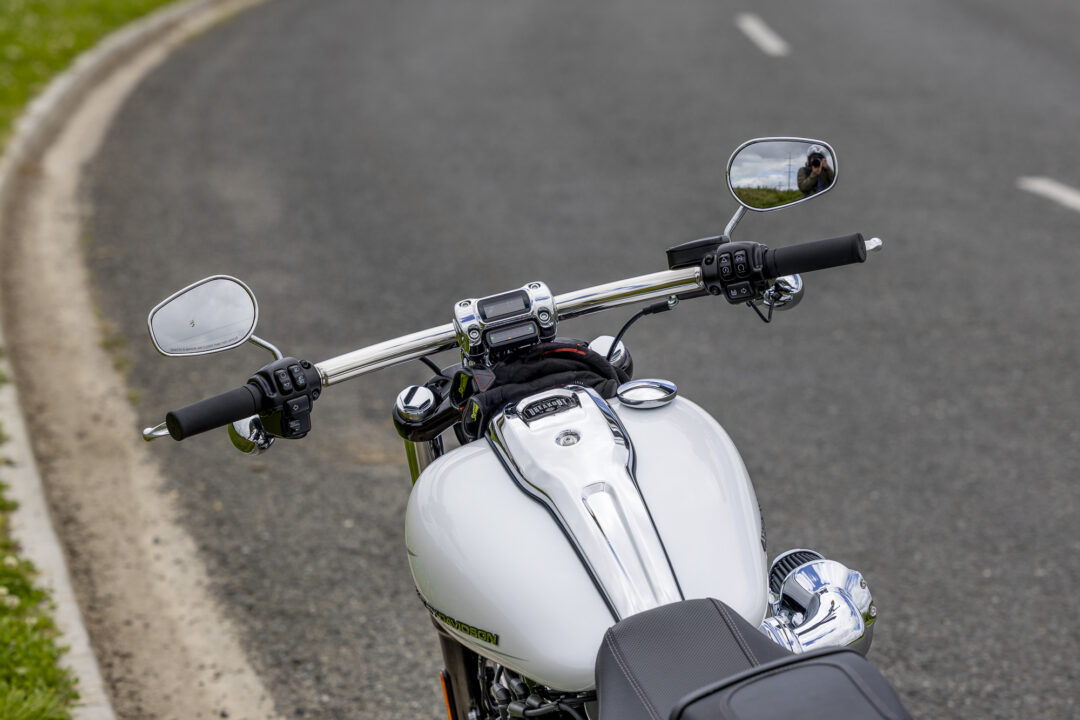
Summer Lovin’
It could almost be a bit romantic owning a Breakout, as it’s not the sort of bike that you’d choose for any other reason than the look. The massive rear tyre and the raked-out stance give the Breakout the classic cruiser look, with the big V-twin, stacks of chrome and fancy wheels really setting off the package. But models like the Low Rider S would undoubtedly offer more performance if that was your thing. So it has to be the look.
And I must admit that the Breakout really does make a statement, especially when it comes to non-motorcyclists. Anyone who visited was instantly drawn to the Harley over any other bike I also had on test, with the visual impact taking them aback. And riding it is much the same, with the entire experience feeling, dare I say it, manly! You muscle the Breakout around whether you’re riding at 10km/h or 100km/h. And everyone looking at you can see it.
Then there’s the price. Starting at $43,250 ride-away for the white one, which we really like, the Breakout looks expensive and IS expensive. Again, it’s more of a statement choice than a rider’s choice, and that’s okay. If I won Lotto, I’d have one. But I’d need a few other bikes alongside it. The Breakout is excellent at what it’s designed to do – be the ultimate American V-twin cruiser. The impressive bit is that H-D has managed to make the Breakout a pretty decent motorcycle to ride as well as look good on, meaning you don’t just have to look cool.
If you’re in the market for a big twin cruiser, then you can’t really go past the Breakout. It’s limited by its design, but not by as much as you’d expect. And I still think it’s pretty cool.
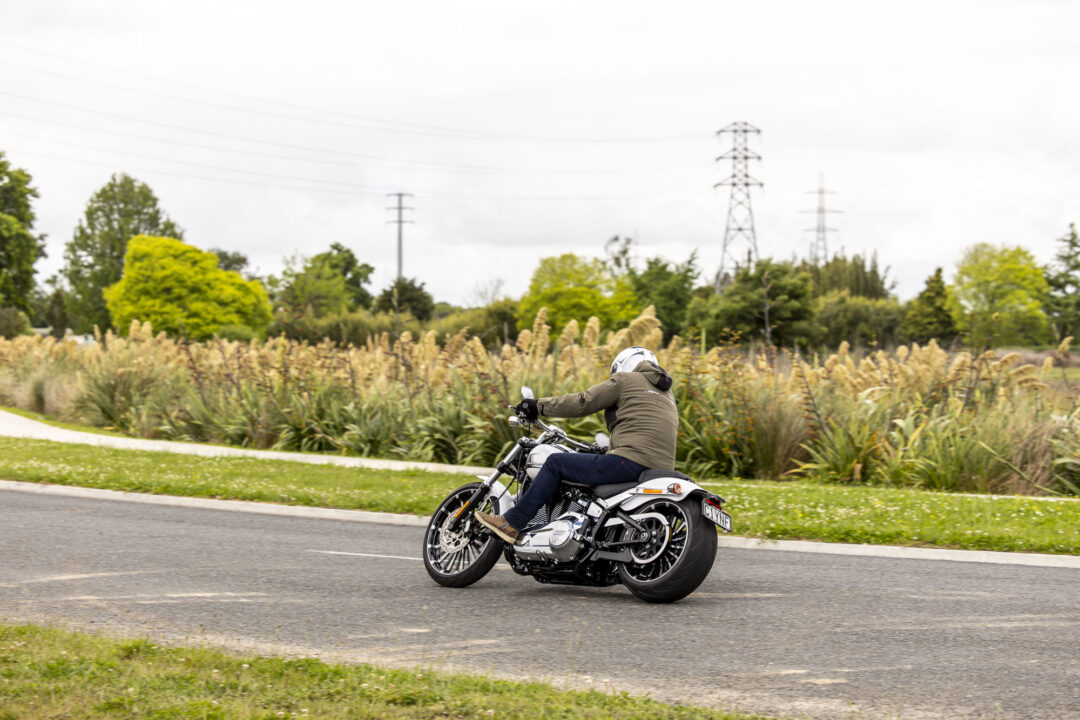
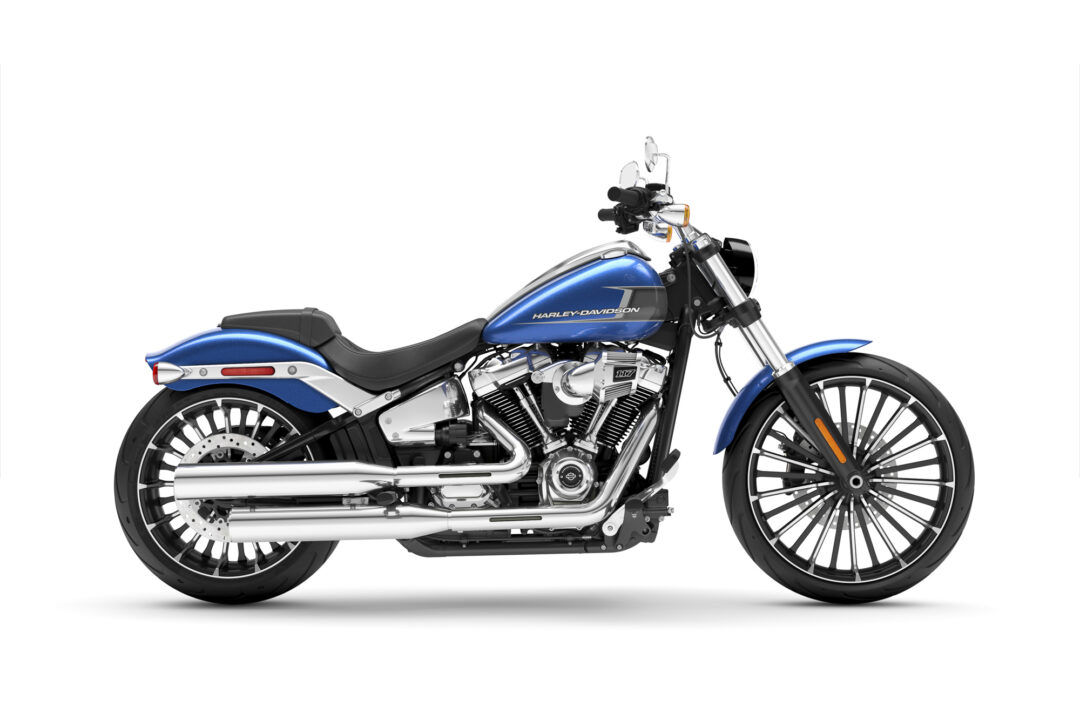

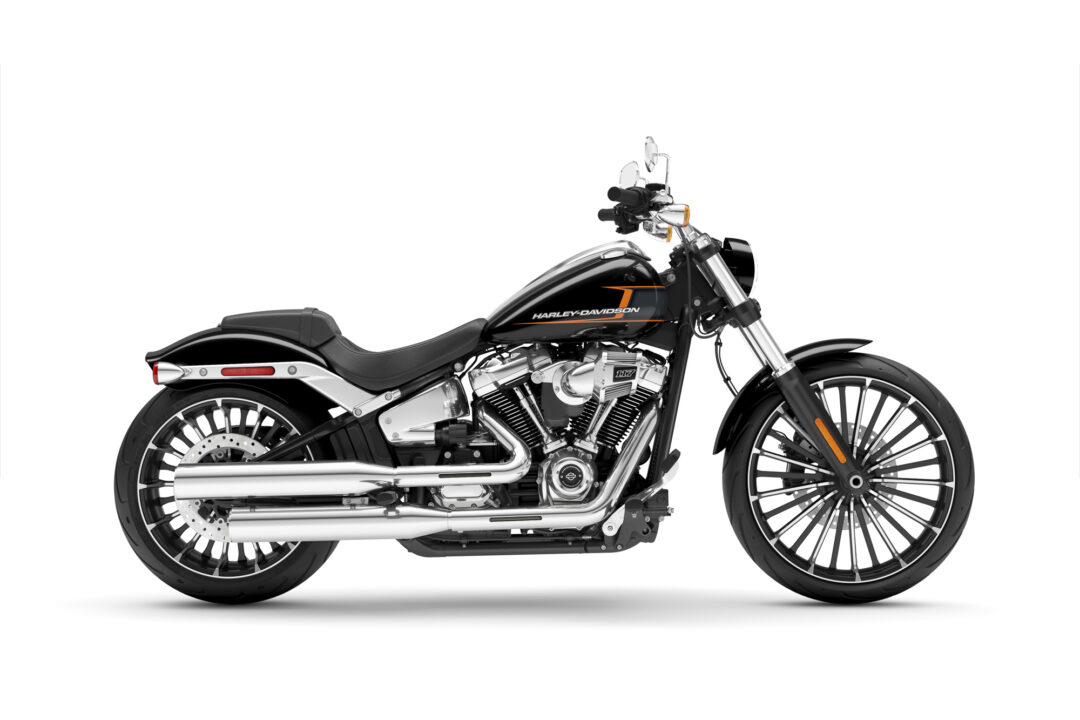
Technical Specifications
Harley-Davidson Breakout 117
Price: $42,250 ride-away
Dimensions
Length
2,370 mm
Seat Height, Unladen
665 mm
Ground Clearance
115 mm
Rake
34
Trail
145 mm
Wheelbase
1,695 mm
Tyres, Type
Michelin™ Scorcher 11, front and rear
Tyres, Front Specification
130/60B21,63H,BW
Tyres, Rear Specification
240/40R18,79V,BW
Fuel Capacity
18.9 l
Oil Capacity (w/filter)
4.7 l
Weight, As Shipped
296 kg
Weight, In Running Order
310 kg
Engine
Milwaukee-Eight™ 117
Bore
103.5 mm
Stroke
114.3 mm
Displacement
1,923 cc
Compression Ratio
10.2:1
Fuel System+
Electronic Sequential Port Fuel Injection (ESPFI)
Exhaust
2-into-2 staggered; catalyst in muffler
Performance
Engine Torque Testing Method
EC 134/2014
Engine Torque+
167 Nm
Engine Torque (rpm)
3500
Horsepower
102 HP / 76 kW @ 5020 rpm
Lean Angle, Right (deg.)
26.8
Lean Angle, Left (deg.)
26.8
Fuel Economy Testing Method
EU 134/2014
Fuel Economy+
5.6 l/100 km
Chassis
Front Fork
Dual-bending valve 49 mm telescopic with aluminum fork triple clamps; dual rate spring
Rear Shocks
Hidden, free piston, coil-over monoshock; 43mm stroke; toolless hydraulic preload adjustment
Wheels, Front Type+
Gloss black, 26-spoke cast aluminum
Wheels, Rear Type+
Gloss black, 26-spoke cast aluminum
Brakes, Caliper Type
4-piston fixed front and 2-piston floating rear
Brakes, Rotor Type
Front and rear black, Split 7-spoke floating rotors
Electric
Lights (as per country regulation), Headlamp, Tail/Stop/Front Signal Lights
All LED, low beam, high beam and signature position lamp; Integrated, multi-function LED stop/tail/turn signals; Incandescent bullet turn signals; Integrated, multi-function LED stop/tail/turn signals
Gauges
2.14-inch viewable area LCD display with speedometer, gear, odometer, fuel level, clock, trip, range and tachometer indication
Rider Safety Enhancements
Anti-lock Brake System (ABS)
Included
Traction Control System (TCS)
Included
More details

